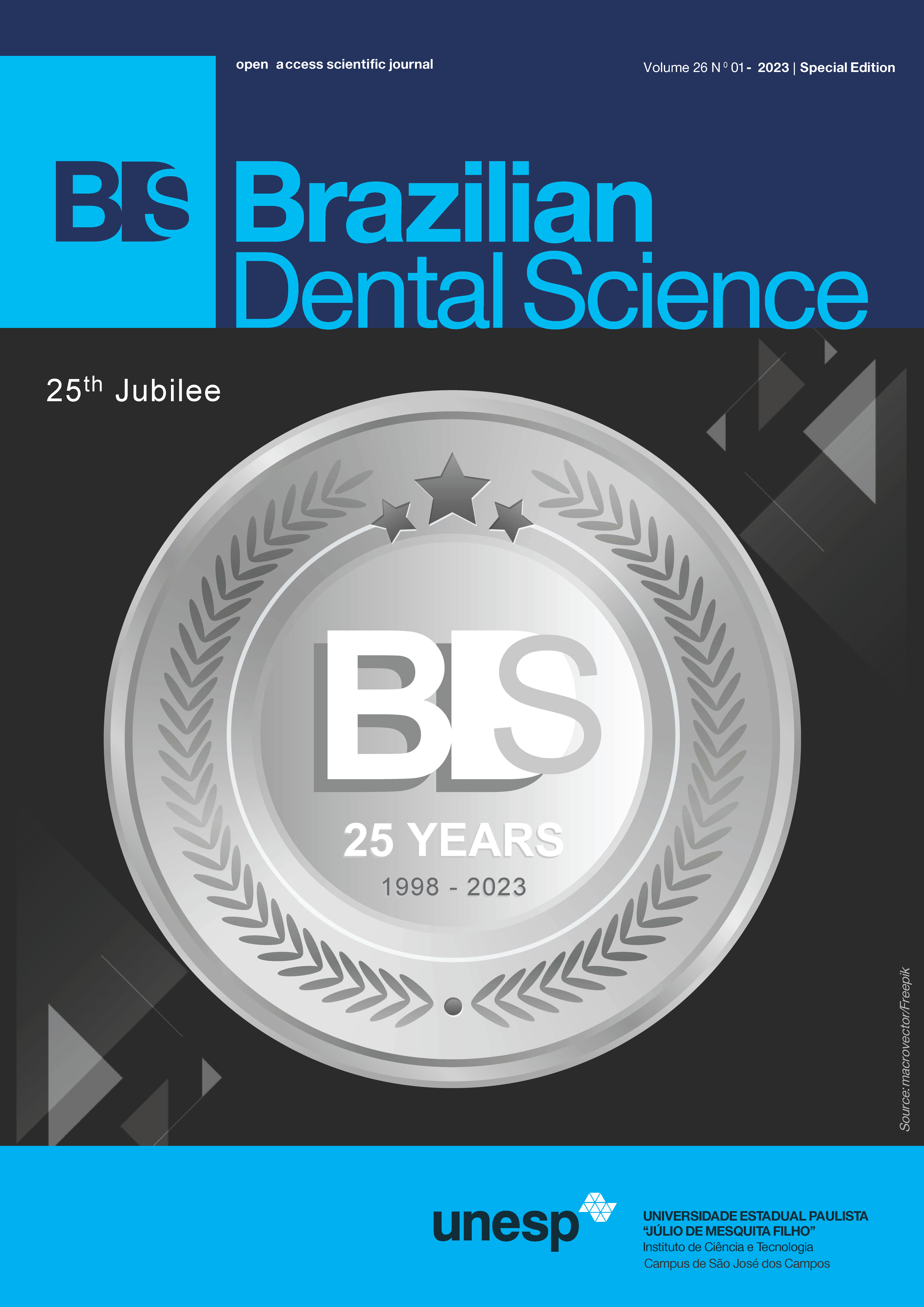Effects of different toothpaste formulations on erosive tooth wear prevention: systematic review
DOI:
https://doi.org/10.4322/bds.2023.e3688Abstract
Objective: erosive tooth wear is a multifactorial condition that results in loss of dental hard tissue, caused by a chemical and mechanical process. This paper aims to carry out a systematic review presenting the effects of different toothpaste formulations on the loss of dental enamel surface in vitro. Material and Methods: the searches were performed in the databases PubMed, Web of Science, LILACS and Scielo. Articles published from 2010 to 2020 were filtered, without language restriction. Articles that included abrasion and erosion protocols were searched, as they were more similar to clinical reality, since toothpaste is applied through tooth brushing. The searches with descriptors and free terms on the topic resulted in 992 articles, however only 12 were within the search criteria. Results: the selected studies appointed that association of conventional fluorides (NaF) with metallic fluorides can be a promising strategy for the reduction of surface loss by erosive tooth wear. Toothpastes containing sodium fluoride, as well as tin without chitosan, showed a reduction in surface loss, considered sufficient for individuals with medium exposure to acids. In children’s toothpastes, the one containing sodium fluoride showed a reduction in surface loss when compared to non-fluoride dentifrices. Conclusion: different protocols may result in less or greater loss of enamel surface, and methodological differences should be considered. To clarify the effects of dentifrices on erosive tooth wear, other properties of dentifrices should be investigated. KEYWORDS Erosive tooth wear; Tooth erosion; Fluoride; Toothpastes; Termo; Systematic review.
Downloads
Published
How to Cite
Issue
Section
License
Brazilian Dental Science uses the Creative Commons (CC-BY 4.0) license, thus preserving the integrity of articles in an open access environment. The journal allows the author to retain publishing rights without restrictions.
=================




























